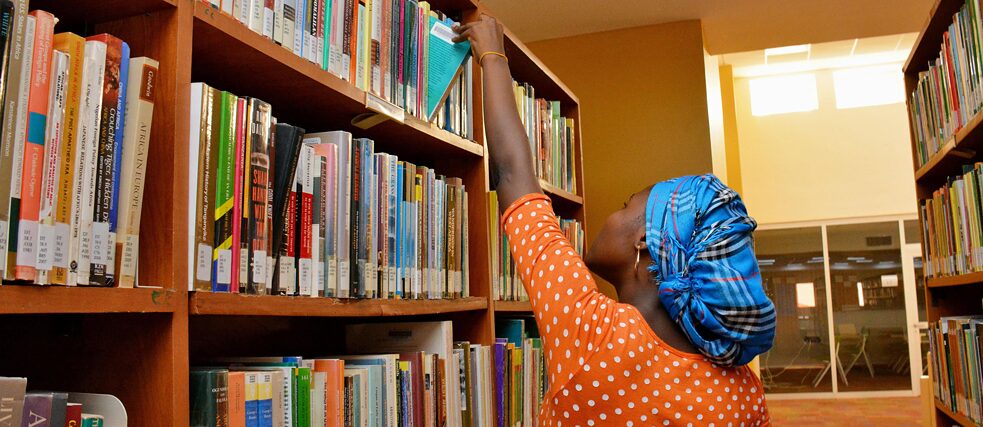Portraying Diversity in Children's Books
Changing the Narrative

Minority groups are far too infrequently represented in children's literature produced in Europe and North America. Unfortunately, these are the books available in most schools and home libraries in Africa. Kachifo, a Nigerian publishing house, is telling new narratives that reflect the diversity in the society. The managing editor, Enajite Efemuaye, spoke to “Latitude”.
By Enajite Efemuaye
Your decision to venture into publishing was driven by the desire to create a platform for African writers to present their own ideas to the rest of the world. You have since expanded your portfolio to include publishing books for children. Why was this necessary and how has the experience been so far?
Nigeria has a rich oral tradition and, after independence and under successive military regimes, most of the books published for children were textbooks for school. And they were published mainly by British-owned publishing houses. Most of the “literature” for children took the shape of story-time programmes on television and radio. In order to keep with changing times, more publishers got involved in taking that oral tradition and translating it into written form. Not just for folktales, which were the popular genre, but for more contemporary stories: speculative fiction, mysteries, poetry, stories that deal with social issues and so on. That’s why we ventured into children’s books with our Tuuti imprint.
Publishing for children in Nigeria is, however, still very much in the experimental phase. We’re just beginning to build the expertise needed to grow a niche industry. It’s a lot of fun and hard work but the experience has been rewarding for the most part. Especially when we organise events and get to meet the children and parents who read our books and we see their excitement firsthand. It’s not so rewarding financially but that is a problem with publishing generally.
What challenges do publishers in Africa face and are there any particular hurdles specifically linked to publishing for children?
I think the one challenge we have in common within the continent is distribution. Getting books published in Nigeria to, say, Senegal, costs almost twice as much as the books. In Nigeria specifically, one of the biggest challenges we face is piracy. Once a book gains a little popularity, the pirates swoop in and flood the markets with pirated copies. The lack of established distribution channels -most publishers handle their own distribution - and the inadequate enforcement of laws against copyright infringement just makes it easier for the culprits. We also have to deal with challenges of poor power supply, lack of access to credit facilities and the many business-unfriendly regulations made by the government. These problems are not limited to children’s publishing – they affect the entire publishing industry.
Publishers of children's literature from Northern Europe and Germany have been faulted for not adequately reflecting the increasing diversity of those societies in their books. On the other hand, African societies are also becoming more diverse due to globalization. To what extent does cultural diversity determine the content you publish for children in Nigeria?
Many of the children’s books you find in local bookstores are foreign books. So the most important thing for us right now is representation for the average Nigerian child, which means making sure that our illustrations look like our audience and the stories reflect experiences the children can relate to.
We also consider cultural diversity but it means something different for us. We have over 300 distinct ethnicities in Nigeria but most of the books tend to represent the three “major” ethnicities - Igbo, Yoruba and Hausa. On the other hand, globalization and migration have added another variable into that equation. Our policy is to reflect these realities in the content that we publish.
Due to the limited availability of locally published books in Africa, books from Europe and North American often find their way on to the African book market. Have you identified any stereotypes in those books that you deliberately deconstruct as you provide alternative literature with local content?
Africa is rarely represented in those books. And when it is, the image is that of a homogenous, indistinct “African” village or city or forest. This monolithic Africa silences a truly exciting multiplicity of ethnicities and experiences. The stories we publish shift the focus to Africa, as I mentioned earlier. They examine our place in the world , as good literature should.
In an ideal situation, you would certainly want to present African stories to a global audience. Have you taken any steps in this direction? Are there any opportunities for collaborating with European publishers and what would an ideal partnership look like?
We haven’t explored collaborations with European or other foreign publishers mainly because we have limited resources so all our energy is being directed to building a stronger industry here, which would then provide a solid basis for a global incursion. We are positioning ourselves to bring value to international collaborations, which means we are happy to collaborate should the occasion present itself. Our vision is to facilitate a global exhibition of Nigerian writing and illustration through partnerships with publishers in other countries.